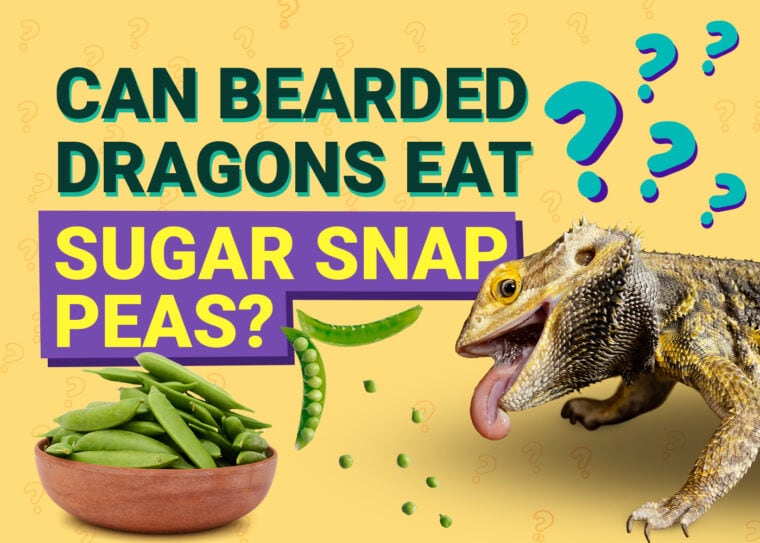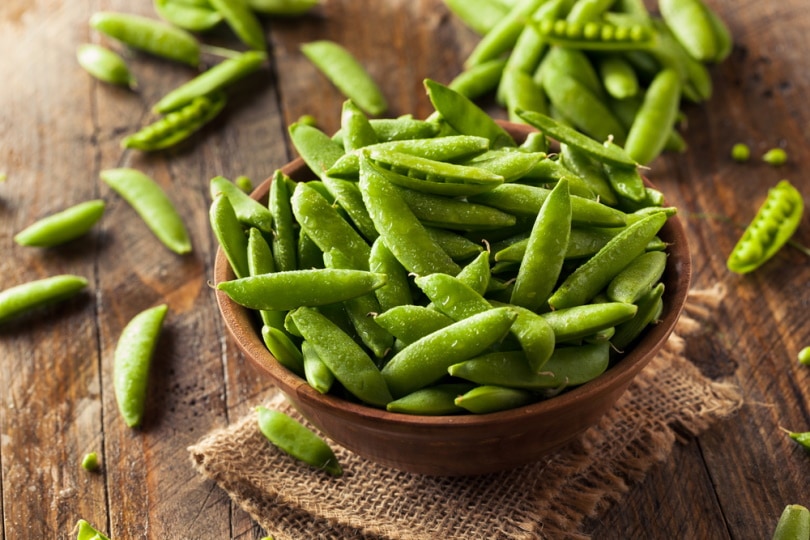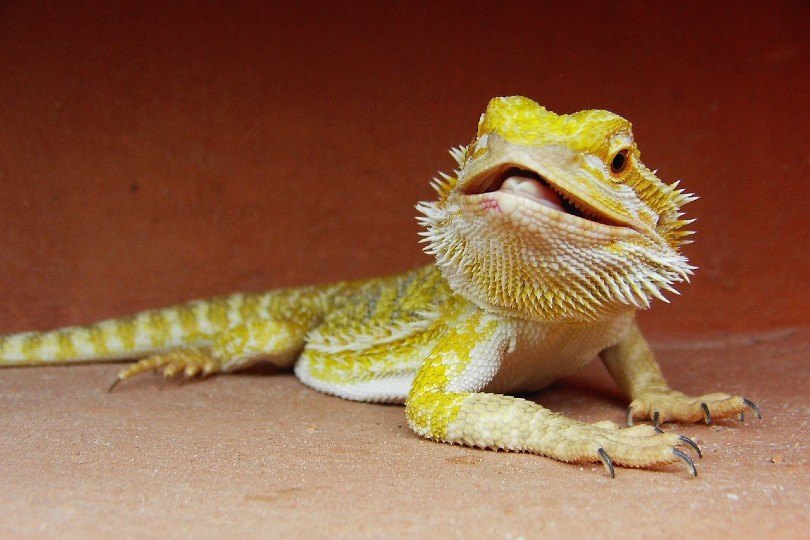
Sugar snap peas are delicious snacks in salads or all on their own, and they are packed with nutrition too! If you love to munch on these delicious treats occasionally, you may be wondering if they are safe to feed to your bearded dragon. Bearded dragons love crunchy greens, and sugar snap peas may seem like a great addition to their diet.
Can Bearded Dragons eat sugar snap peas? Are sugar snap peas safe to give to your reptile? Yes, they are, but only in small amounts and not that often. While there are many nutritional benefits to be gained from sugar snap peas, there are concerns too.
In this article, we’ll look at the potential benefits
Sugar Snap Peas 101
Also sometimes known as mangetout (although this term refers to both sugar snap peas and snow peas), sugar snap peas are edible pod peas with thick, rounded walls. They are climbing plants that are a member of the legume family and are a cross between snow peas and garden peas. They are sweet vegetables that can be eaten raw or lightly cooked (overcooking them will cause them to fall apart) and are common additions to salads and stir-fry.
They are highly adaptable plants that can tolerate higher temperatures than many other pea varieties and can grow up to 6 feet tall on a trellis or similar support structure.

The Nutritional Analysis of Sugar Snap Peas
Unfortunately, the potential benefits of sugar snap peas are very few. They have acceptable levels of water and protein (arguably better amounts than a few other vegetables). Furthermore, they are low in oxalates and goitrogens, which is always a welcome trait in any food you wish to incorporate into your bearded dragon’s meals. Unfortunately, that’s where the benefits seem to stop.
Though they have fiber, they contain just about as much sugar, which makes them an unappealing option for fulfilling your pet’s fiber requirements. The sugar content of peas may also be a contributing factor1 for dental disease in bearded dragons.
Perhaps the greatest drawback of all, though, is that the amount of calcium and phosphorus in sugar snap peas are in an inappropriate ratio.
For healthy adult bearded dragons in maintenance, their diet should have a calcium-to-phosphorus ratio of anywhere between 1.5:1 and 2:1. This means the calcium should be around twice as much as the phosphorus. The recommended ratio for juveniles is around 2:1, and dragons that are breeding (particularly females) require a much higher calcium intake compared to adults in maintenance.
In peas, though, the calcium is much lower than the phosphorus, typically around 1:4. This means that the amount of phosphorus in peas is about four times as much as the calcium.
Phosphorus balance in your bearded dragon’s body requires that it be in the correct proportion with calcium. Such balance requirements exist for many minerals, and therefore, they should usually be assessed together to ensure that a certain food is appropriate for your pet.
Phosphorus naturally binds to calcium, so when a bearded dragon is fed high amounts of phosphorus and not enough calcium, their body responds by pulling calcium out from the bones to restore the proper levels of minerals and reduce the excess phosphorus in the bloodstream. Over time, the loss of calcium from bone mass can make the bones brittle and weak, leading to a condition called metabolic bone disease2.
In addition, an inappropriate ratio of calcium to phosphorus is undesirable for the long-term health of a bearded dragon because it may predispose them to kidney or parathyroid issues. Therefore, sugar snap peas should only be viewed as an occasional treat and one that you shouldn’t look to actively incorporate into your pet’s diet.
It is worth noting that while sugar snap peas are high in Vitamin C, bearded dragons are able to make this vitamin on their own and don’t require it from their diet. A bearded dragon that is unwell, stressed, or suffering some certain ailments might definitely benefit from the inclusion of vitamin C in the form of supplements. However, sugar snap peas are a very poor choice to get this job done.
In short, the nutritional downsides of sugar snap peas are far greater than the benefits; therefore, this vegetable should be considered an occasional treat only.

How to Prepare Sugar Snap Peas
The key takeaway when offering your pet any fresh produce is to make sure it is thoroughly washed so that it is free of any chemicals, pesticides, or contaminants. In addition, you should remove any uneaten fresh produce after a period of about 4-6 hours at most (fruits tend to spoil much faster than vegetables; however, it’s best to not leave them out for too long).
If you opt to offer your pet sugar snap peas as a treat, they should ideally always be given raw, as this will keep all their nutritional value intact, and your dragon will likely prefer the crunchy texture.
Canned snap peas are generally fine, although you should make sure that there are no added preservatives, flavors, or sugar, as these can all be harmful to your dragon. Frozen peas that are thawed and brought to room temperature are also acceptable.
Some dragons will enjoy crunching the entire pod with the sweet peas inside, while others will enjoy the peas on their own. Try to give small amounts of each to your reptile to assess which they prefer. However, be warned that some peas may contain a worm inside the pod (these critters enjoy peas too!), and it isn’t advised to feed your pet insects that are sourced from an unknown source.
A pod with a worm or critter inside is generally very lightweight compared to other pods. A light (such as that attached to your phone) can be held behind the pod to visualize a critter inside the shell, if necessary.

Summary
While it is safe to give your bearded dragon small amounts of sugar snap peas, this should be done as a rare treat only. The calcium to phosphorus ratio is too much of a risk in large amounts, and dragons can get all the nutrients that snap peas provide from other, safer sources.
As always, if you’ve ever in doubt about your dragon’s nutritional requirements, it’s best to consult your veterinarian for more information and guidance.
Featured Image Credit: PxHere








